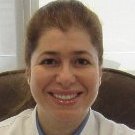Neuroglionanobots… a pretty cool name, right? In the past, I considered myself a huge fan of IA, however, I didn’t consider how much AI could impact our work as scientists. I didn’t consider how many human activities can be affected by this new way of getting, organizing, and managing information. However, there are dark paths in which we need to be careful. The other day I saw a Facebook post in which a young fella showed how to do a Facebook place to get money. This guy showed how the AI was capable of choosing the best topic (health and self-care in this example), and the AI was capable of creating evidence that supports the contents of the page and creating smart quotes or highlights to get attention. At the end, this guy looks at the camera, so proud of his “work” and says that all this work was done in minutes thanks to the AI. So many problems in that post, in the first instance, one guy without any kind of preparation in health, medicine, pharmacy, etc. can do a place to advise on self-care and nutrition; secondly, nobody can corroborate the information because there is no clear how the IA took the information from the web; in third place, where is the ethics of doing in that way?; I can continue, but I believe that my point is out there.
The IA feeds itself from the entrances that we do regularly, in the form of papers, books, blogs, comments, etc. but if we continuously use it to produce the products used for their feedback, then what??? Did you see the problem??? In the long term, the IA could be fed in a loop without entrance from the exterior… I know that I may be Im overreacting, but the truth is that we need laws to regulate the use of AI; we need to incorporate ethics in this discussion and we need to show to the new generations the implications of the misuse of AI.
Long Live and Prosper humans


.thumb.jpg.a858dd42891f6e0a00aae90a411db6b3.jpg)





.thumb.jpg.a858dd42891f6e0a00aae90a411db6b3.jpg)
.thumb.jpg.a858dd42891f6e0a00aae90a411db6b3.jpg)
.thumb.jpg.a858dd42891f6e0a00aae90a411db6b3.jpg)



